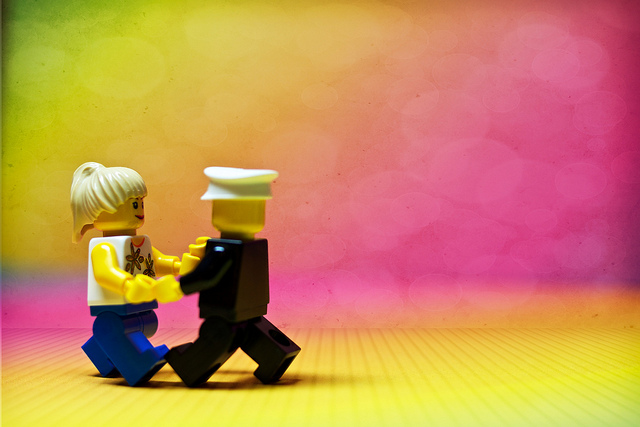
This engaging party trick is based on a cube and it is supposed to reveal the innermost thoughts of anyone you choose to play it with.
The test is capable of forming close connections with new people in just minutes as we delve into the subconscious mind.
Although there are a few variations of the game, it is based on ancient Sufi traditions of using alternate ways to open up and gain insight into your true personality.
It is the perfect game for any gathering, as it starts out just as a series of puzzling questions and it can very quickly lead to deep and meaningful conversation about almost every aspect of life.
Before starting, if you want to actually play the game, don’t read all the way to the bottom as the interpretation of the game is revealed.
When playing, it can be a good idea to write down all the answers, so you can reflect back on them when you see the aim of the game. Another option is to draw out the scene. Otherwise talk it through and just try to remember what has been said in relation to each part.
The Game:
There are five questions and no right or wrong answers. Everyone will describe something different. It is important to focus on detail and think for a few moments before answering.
Imagine a room with nothing at all in it. Then place a cube in the room.
1. Now describe the cube. How does it look, how big or small is it? What is the cube made of, can you see inside it? Is it colorful and if so, what color, and how bright or dull? Where exactly is it located in the room? Is it in the air or on the floor?
2. Place a ladder in the scene. Describe the ladder. What is it made out of? How stable, big, weak or strong is it? Where is the ladder in relation to the cube? What color is the ladder? How many rungs are there on the ladder?
3. Place a horse in the scene too. Describe the horse. What type of character does it have? What is it doing? Is it going anywhere, and if so, where? What does it look like? What color is it? Where exactly is the horse located in the scene. Is it tied up or freely roaming around? Is it facing towards or away from the cube? Does it have a saddle?
4. Place a flower or flowers in the scene. Describe the flowers. How many are there and what do they look like. Are they colorful and, if so, what colors? Where are the flowers placed in the room??
5. Imagine a storm. Describe the storm. What type of storm is it and what colors are in it? Is it violent or has it calmed? Is it close by or in the distance? What direction is the storm heading and does it affect the horse, flowers, cube or ladder? Is the storm in the room, or are you looking at it through a window?
If you also want to play along—stop reading now and don’t scroll any further until you have answered the questions as the next part will affect your ability to play the game again.
Interpreting the Results:
The room is how we see our world right now. It is how we perceive our outer world, if it is small and dark, we may feel limited right now. If it is vast and light, we see the world as a huge, safe playground, waiting to be explored.
The Cube
The cube is yourself. The position of the cube in the room represents how we perceive ourselves in the world. If it is in the middle of the room, we feel secure and at the center of the universe. If it is in a corner, we feel shy and on edge.
The size of the cube is related to our ego. Depending on how big or small the cube is in relation to the scene depends on how you see your place in the world. The bigger the cube is, the greater you see yourself, the smaller the cube, the humbler you are. The color of the cube relates to your mood or mindset right now.
The vertical position of the cube relates to how grounded you are. If the cube is resting on the floor, you are likely very down to earth and balanced. If it is floating in the sky, it means your head is in the clouds.
The material the cube is made of is associated with how open you are. If it is transparent, it means you are open and free minded and that you allow people to see through you. If it is opaque, you are more guarded and protective of your thoughts, emotions and feelings. If it is strong, you are strong, tough and resilient; if it is soft, you are gentle and more emotional.
If the cube is brightly coloured it means you are light-hearted, positive, happy and a delight to be around. If it is dense you are protective, solemn and serious.
The reason the cube is said to directly relate to ourselves is because we project our own identity onto abstract objects, which is why we envisage ourselves as the cube.
The Ladder
The ladder represents your closest friends.
If your friends (the ladder) are leaning on the cube, it means your friends depend on you. If can also mean you have close relationships. If the ladder is weak, your friendships are presently weak. If the ladder is strong, your friendships are strong and stable. If the ladder is far from the cube, is shows there is distance between your friendships. The more rungs on the ladder, the more friendships you have.
A ladder represents friendships as it is supportive.
The Horse
The horse represents your partner or ideal partner. How you describe the horse relates to what you look for in a partner. If the horse is near, or far from the cube, it represents the distance between you and either relating the person you are currently in a relationship with, or someone that is on your mind.
If the horse has the saddle, we are the ones in the driving seat; if it doesn’t, it is wild and free spirited. If the horse is running around, it means we want to explore and travel with our partner.
If the horse faces you, it means you have their attention right now and they are focused on you. If it is turning away, it represents you may feel they are currently preoccupied with other interests.
A horse represents a partner as it is believed that we project our affectionate side onto animals.
The Flowers
The flowers represent children. The number of flowers that you imagined in the scene relates to how many children you imagine having, or how many you have. Some people will imagine just one flower, others may imagine flowers everywhere.
The location of the flowers in relation to the cube can identify how you perceive children, or how connected to children you currently are.
The color of the flowers can represent the personalities of the children around you, or the children you hope to have one day in the future.
Flowers represent children as we nurture flowers and take care of them as they grow.
The Storm
The storm represents an obstacle or difficulties in your life. This refers to the current state of your mindset and how much risk or chaos you perceive to be in your life at the moment. The distance of the storm relates to how near of far the storm is, whether you are in the middle of it right now, or whether it is just passing.
The strength of the storm is an indication of how much you think your life is threatened right now.
The storm represents issues in our life as the thought of it unearths feelings that are associated with unease.
If the storm is inside the room, you may feel the obstacles are interfering with your life. If the storm is outside and you are viewing it through a window, you feel sheltered and safe from harm.
Even though all of the answers above may not be an absolute guaranteed reflection of the mindset, it is interesting to see how different people relate to, and describe each new entity that enters the scene. When you play the game with people you know, it will be easier to see how much truth there is behind this ancient game. And when played with strangers, it is a great starting topic to really get a full in-depth conversation flowing, within minutes discussing character, friends, partner’s children, and what we are afraid of and what we desire.
When playing it is best to remember that it is just a game. We should take the answers lightly and remember that depending on how we feel at that very moment in time, the answers could change dramatically. It is a great little trick to start conversation and can be a lot of fun discussing the answers and seeing how the different parts in the scene relate back to different areas of our lives.
It can also be interesting to try to psychoanalyze someone based on their answers, or even analyze ourselves and perceive how our mindset is at the present time. Although, it shouldn’t turn out to be an interrogation. This is a game first and foremost and the intentions of it are purely for enjoyment purposes.
How colorful the room and the objects are can be decoded by reading the color associations below:
Red: Anger, anxiety, determined, energetic, enthusiastic, impatient, impulsive, materialistic, nervous, passionate, powerful, resentment, unforgiving.
Deep red: Grounded, inner strength, powerful, sexual, strong-willed.
Bright or light pink: Affectionate, disciplined, loving, romantic, self-love, sensitive, sensual, soft, tenderness.
Orange: Advanced spiritually, adventurous, control, creative, healthy, honest, kind, leader, outgoing, powerful, stamina, teacher, vitality.
Orange/yellow: Creative, intelligent
Yellow: Analytical, awakened, content, easy-going, free, good communication, happiness, intelligence, leader, no attachments, optimistic, spiritual.
Gold: Affectionate, artistic, inner knowledge, intuitive, strong spiritual energy, wisdom.
Green: Animal lover, enjoys the outdoors, good balance, healer, healthy, in tune with nature, peace, need for security, nurture.
Dull green: Envy, jealous, needs loyalty, possessive, untrusting.
Yellow/green: Good communicator
Turquoise: Compassionate, organized, sensitive.
Blue: Balanced, calm, caring, free-thinker, generous, good communication, helper, integrity, intelligent, kind, loving, patient, peaceful, sensitive, sympathetic, truthful.
Light blue: Intuitive, peaceful, truthful
Royal blue: Clairvoyant
Indigo: Depth, intuitive
Violet: Artistic, communicator, empathetic, inspirers, intuitive, leader, performer, philosophical, psychic power, philosophical, spiritual growth, visionary.
Lavender: Dreamer, imaginative.
White/Silver: Adaptable, etheric, gifted, intuitive, nurturing, psychic, sensitive, spiritual, successful, talented.
Grey: Fear
Dull grey: Fear, frustration, holding on to resentment, pain.
Brown: Confusion, low self-esteem, materialistic, negative, selfish.
Black: Anxiety, depression, fear, guarded, grief, guarded, hatred, holding on to pain, illness, protective, guarded, unforgiving.
Cloudy white: Difficult to read, lacking consciousness, there may be problems.
Clear white: Authentic, cleansing, divine, highly spiritual, pure prana energy.
Feel free to leave your interpretation of the scene in the comments below.
~
BONUS: Why Astrology is awesome:
Relephant Favorite:
The Ancient Enneagram Personality Test with Detailed Profiles: Finding Out Who We Really Are.
~
Author: Alex Myles
Editor: Travis May
Photo: Flickr/Jinho Jung






Read 1 comment and reply